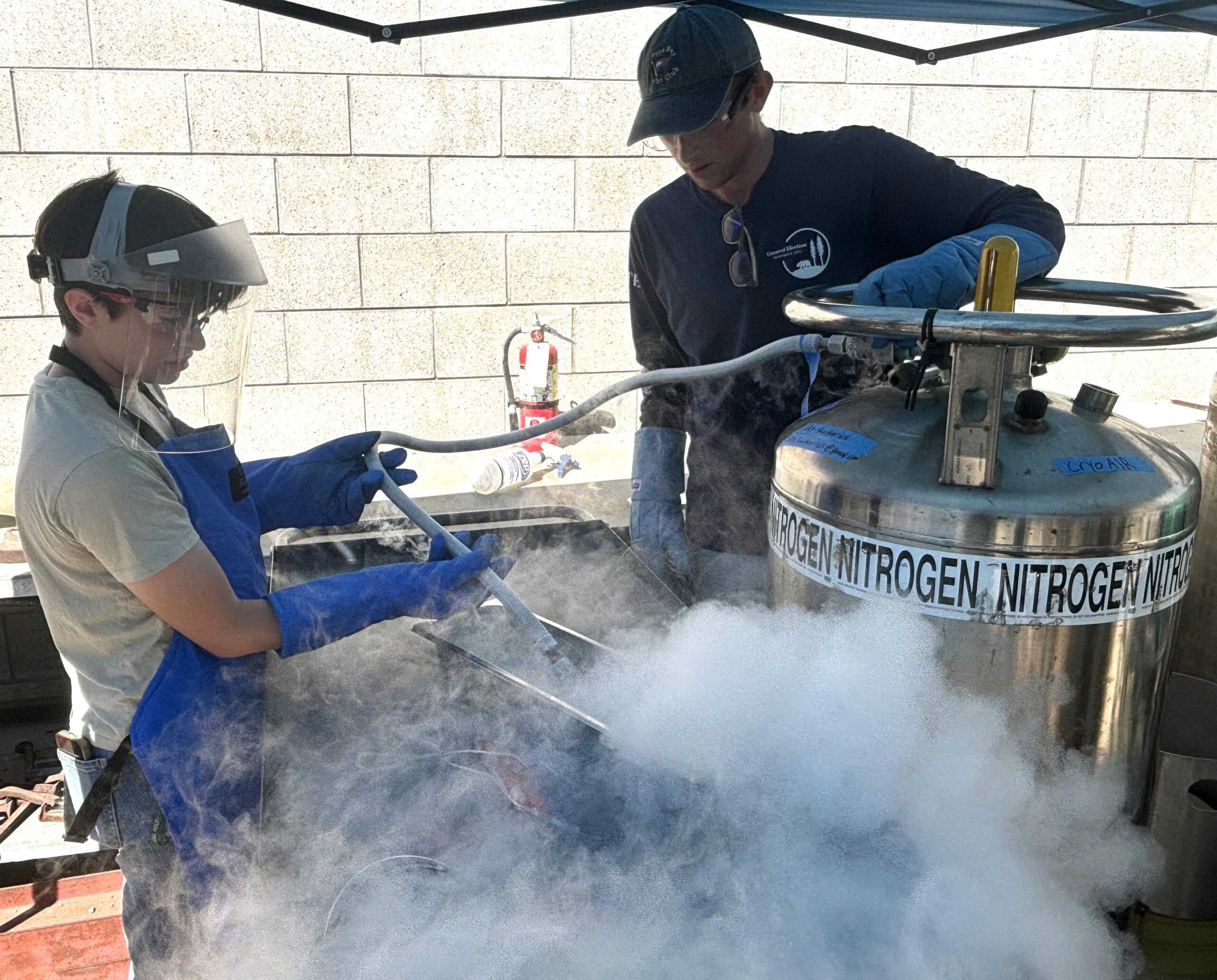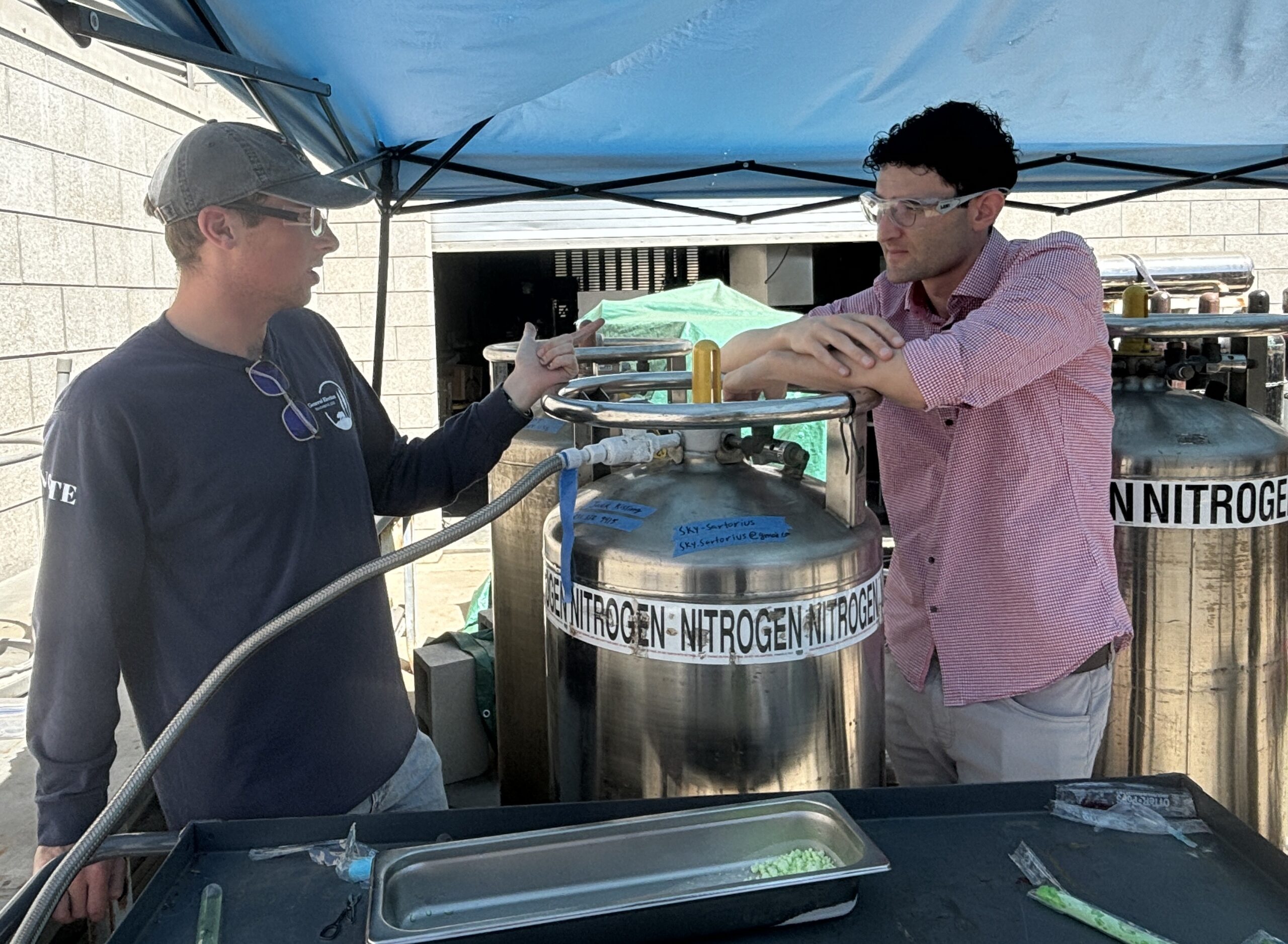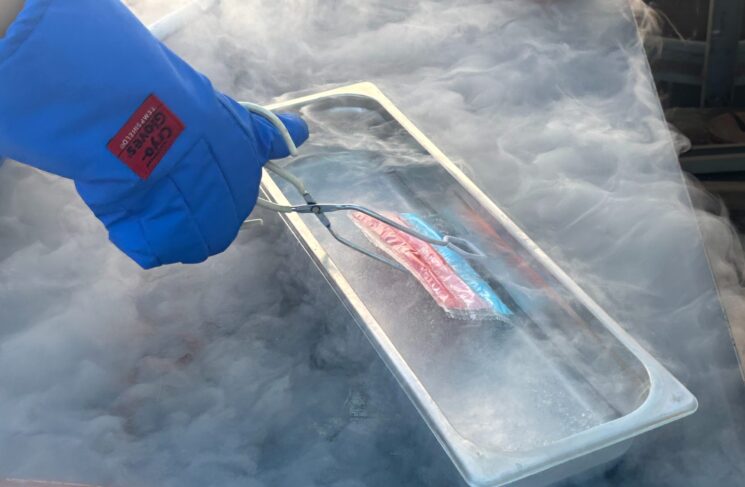On a hot summer morning, mechanical engineering sophomore Lillian Panning and aerospace engineering senior Jack Kisling savored the sweet taste of Otter Pops outside the Aerospace Propulsion Lab.
Just moments earlier, the pops had been warm and liquid, but they froze solid in seconds after a quick dip in liquid nitrogen.
“It’s a very fun texture,” said Panning who’s from Pasadena, as she tasted a red pop while suited up in protective gear. “It’s even more fun when you think about everything we did to get to the point of eating popsicles.”

Their experiment was more than just a quick way to freeze popsicles; it was a critical test of safety procedures that Panning and Kisling, in collaboration with Boeing engineer and alumnus Sky Sartorius, had spent weeks developing. These procedures will guide future students, starting this year, as they investigate cryogenic fuels as an alternative energy source for commercial aircraft to help reduce carbon emissions.
“It took us eight weeks to get here, but that’s eight weeks a senior project team won’t have to spend on this phase,” said Kisling, a Capitola native, explaining how they were laying the groundwork by establishing and testing safety procedures.
Boeing is collaborating with mechanical engineering Professor Melinda Keller through the Summer Undergraduate Research Program, marking the start of a series of projects that could play a key role in shaping the future of fuel technologies for commercial aviation.

Laying the Groundwork
In 2022, aviation was responsible for 2% of global carbon emissions, a figure that has grown faster in recent decades than those from rail, road or shipping.
To tackle this challenge, Cal Poly has partnered with Boeing to investigate cryogenic fuels – extremely cold liquids like liquid hydrogen or liquified natural gas – as a promising alternative energy source for commercial aviation.
Before this summer, Cal Poly’s Mechanical Engineering Department did not have a dedicated space for cryogenic propulsion research.
Panning and Kisling set out to change that by building a solid foundation – researching the latest advancements in cryogenic storage, creating detailed operating procedures and putting them to the test.
One of the key challenges was compiling existing information from various people and sources. To do this, they reached out across campus to engage those involved in chemistry experiments, thermal vacuum testing and materials engineering.
They then had to broaden and adapt these disparate protocols to support future aviation research.
“The tricky part was figuring out how to equip project teams with what they need when we don’t yet know the exact requirements,” Kisling said.
Their process also included field trips to learn from a range of experts. One visit was to Joby Aviation, a company actively testing its air taxi service, where they gained knowledge from the cryogenic team. They also stopped by Nite Creamery to observe the process of creating nitro-crafted ice cream.
“There’s a lot of excitement around cryogenic fuels,” Kisling said.
Guiding the Future
Eager to be part of this project, Sartorius – a Cal Poly alumnus and advanced concepts engineer at Boeing – was there with Panning and Kisling, asking questions and even sampling the pops. His enthusiasm for working with students on innovative research has been instrumental in guiding their efforts.
“There are many enthusiastic alumni eager to reconnect with Cal Poly,” said Sartorius, who earned his aerospace engineering degree in 2009 and now works at Boeing, based in Long Beach. “Project-based collaborations like this offer a high return on investment for us.”
He will continue advising a senior project team in the fall as they take on cryogenic propulsion research, using the safety protocols and insights developed by Panning and Kisling.

“It’s exciting to work with students who are pushing boundaries,” he said. “They bring an open-mindedness and a fresh perspective that isn’t constrained by experience – exactly what’s needed to explore cryogenic fuels for commercial aircraft, an area that’s still largely untapped.”
He noted that while the aerospace industry was once driven by the mantra “higher, faster, farther,” sustainability has now taken the lead. This shift makes it the perfect time to explore alternative fuel sources for commercial aircraft.
“We’re setting up the next team to hit the ground running, and I’m definitely staying connected to see how the project unfolds,” said Panning, adding that she now feels personally invested in its future success.
By Emily Slater


